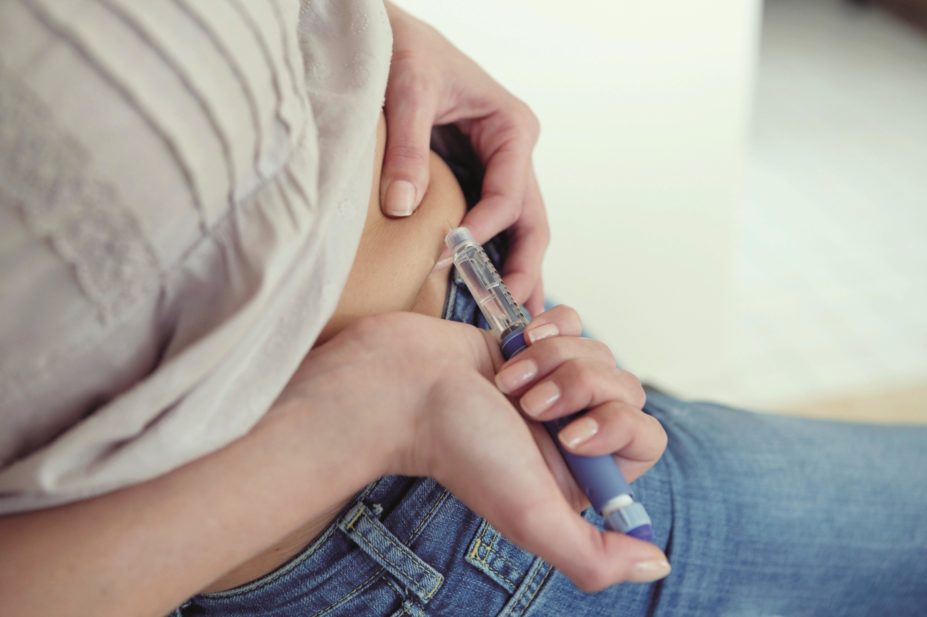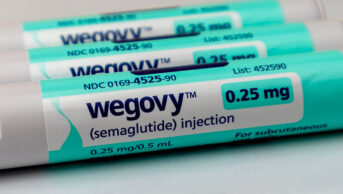
BSIP SA / Alamy
Intensive glycaemic therapy for patients recently diagnosed with type 1 diabetes resulted in a decreased rate of long-term mortality compared with patients given conventional therapy, according to research published on 6 January 2014 in JAMA
[1]
.
Researchers tracked the mortality and specific causes of death of 1,441 patients with type 1 diabetes mellitus for an average of 27 years until the end of 2012. The patients were originally recruited to the Diabetics Control and Complications Trial (DCCT), which took place between 1983 and 1993.
The DCCT divided patients into two groups – one received intensive therapy for an average of 6.5 years with the aim of achieving blood sugar control close to non-diabetic levels. The second group received conventional therapy aimed at avoiding hypoglycaemia.
Among 1,429 DCCT participants there were 107 deaths, of which 64 (8.8%) were in the conventional therapy group and 43 (6%) were in the intensive therapy group (hazard ratio 0.67; 95% confidence interval 0.46-0.99; P=0.045).
Primary causes of death were cardiovascular disease (22.4%); cancer (19.6%); and acute diabetes complications (17.8%). Accidents and suicide accounted for 16.8% of deaths. Higher levels of glycated haemoglobin (HbA1c) were associated with all-cause mortality as well as the development of albuminuria – a condition in which protein albumin is present in the urine.
“These results reinforce the appropriateness of intensive therapy for those with type 1 diabetes,” says lead researcher Trevor Orchard, from the University of Pittsburgh.
Orchard adds that the findings “should impact on clinical practice by encouraging intensive therapy in those who are not currently practicing or fully adopting intensive therapy for fear of hypoglycaemic related mortality”.
The aim of the DCCT was to better understand the effects of near normal blood sugars on long-term complications from type 1 diabetes.
The research also revealed that the rate of mortality was higher among patients with a history of hypoglycaemia; hypoglycaemia also occurred more frequently in the intensive group. Mortality was associated with higher mean HbA1c levels over the full follow-up period.
“It is remarkable that the two groups only differed for a quarter of the follow-up time in terms of glucose control, yet there was a significant difference in 27 year mortality,” says Orchard.
The researchers say that the results “support the emerging concept that most of the excess mortality in type 1 diabetes is mediated by the development of albuminuria”.
They also point out that the rise in mean HbA1c levels demonstrate that maintaining intensive therapy is difficult for many patients.
Victoria Ruszala, specialist pharmacist for diabetes at North Bristol NHS trust, says the research confirms existing UK good practice that intensive therapy should be the first-line treatment for people with type 1 diabetes. “If you develop good blood sugar control you are less likely to develop complications and the earlier this happens it will pay dividends in 10, 15 or 20 years’ time,” she says.
“It may mean that the treatment of patients with type 1 diabetes becomes much more aggressive at a younger age, which is why I think we are already seeing more children with insulin pumps.”
Patients with type 1 diabetes are likely to be treated in secondary care or specialist centres. “From a pharmacist perspective, promoting good glucose control and life style advice to your patients is the best that you can offer.”


